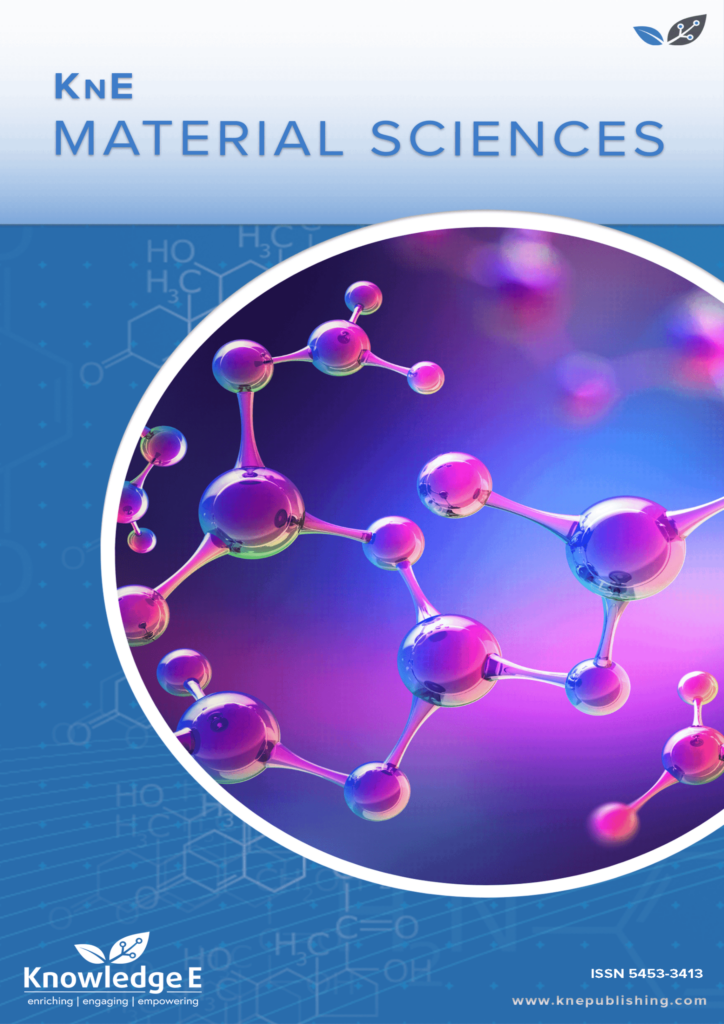
KnE Material Sciences
ISSN: 2519-1438
The latest conference proceedings on physical materials, energy materials, electrical materials.
Short-term Mechanical Properties of Fe-Cr-Al-Si Alloys
Published date:May 06 2018
Journal Title: KnE Material Sciences
Issue title: 15th International School-Conference "New Materials – Materials of Innovative Energy" (MIE)
Pages:491–497
Authors:
Abstract:
The purpose of this work is to study the short-term mechanical properties of Fe-Cr-AlSi-based alloys. Within the framework of this work, alloys with a chromium content of 5 to 14 wt%, aluminum from 0 to 4 wt%, and silicon from 0 to 4 wt% are considered. The samples were tested in three different states - in the deformed state (cold rolling by 80%), and also after annealing at a temperature of 450 and 650 ∘C with a duration of 1000 h.
As a result, the characteristics of the strength and plasticity of alloys in the deformed state, as well as after provoking annealing, were obtained. It is shown that embrittlement isn’t observed in the investigated composition region and annealing conditions, and the strength of the alloys is directly proportional to the sum of the alloying elements Al + Si.
Keywords: cladding; VVER; tolerant fuel, ferrite steel; Corrosion-resistant steel, tensile strength, yield strength
References:
[1] Yamamoto, Yukinori, et al. ”Development and property evaluation of nuclear grade wrought FeCrAl fuel cladding for light water reactors.” Journal of Nuclear Materials 467 (2015): 703-716.
[2] Terrani, Kurt A., Steven J. Zinkle, and Lance Lewis Snead. ”Advanced oxidationresistant iron-based alloys for LWR fuel cladding.” Journal of Nuclear Materials 448.1 (2014): 420-435.
[3] Engkvist, Josefin, et al. ”High temperature oxidation of FeCrAl‐alloys–influence of Al‐concentration on oxide layer characteristics.” Materials and corrosion 60.11 (2009): 876-881.
[4] Liu, Tong, et al. ”The effects of Cr and Al concentrations on the oxidation behavior of oxide dispersion strengthened ferritic alloys.” Corrosion Science 76 (2013): 310-316.
[5] Del Giacco, M., et al. ”Influence of composition and microstructure on the corrosion behavior of different Fe–Cr–Al alloys in molten LBE.” Journal of Nuclear Materials 421.1 (2012): 39-46.
[6] Weisenburger, A., et al. ”Oxide scales formed on Fe–Cr–Al-based model alloys exposed to oxygen containing molten lead.” Journal of Nuclear Materials 437.1 (2013): 282-292.
[7] Lim, Jun, et al. ”A study of early corrosion behaviors of FeCrAl alloys in liquid lead– bismuth eutectic environments.” Journal of Nuclear Materials 407.3 (2010): 205-210.
[8] Chen, C-L., and Y-M. Dong. ”Effect of mechanical alloying and consolidation process on microstructure and hardness of nanostructured Fe–Cr–Al ODS alloys.” Materials Science and Engineering: A 528.29 (2011): 8374-8380.
[9] Field, Kevin G., Richard H. Howard, and Yukinori Yamamoto. Design of Experiment for Irradiation of Welded Candidate Fe-Cr-Al Alloys. No. ORNL/TM-2015/375. Oak Ridge National Laboratory (ORNL); High Flux Isotope Reactor (HFIR), 2015.
[10] Field, Kevin G., et al. ”Radiation tolerance of neutron-irradiated model Fe–Cr–Al alloys.” Journal of Nuclear Materials 465 (2015): 746-755.
[11] Edmondson, Philip D., et al. ”Irradiation-enhanced α′ precipitation in model FeCrAl alloys.” Scripta Materialia 116 (2016): 112-116.
[12] Field, Kevin G., et al. Stability of Model Fe-Cr-Al Alloys Under The Presence of Neutron Radiation. No. ORNL/TM-2014/451. Oak Ridge National Laboratory (ORNL); High Flux Isotope Reactor (HFIR), 2014.
[13] Tarasov B.A., Konovalov I.I, prepared to publication.